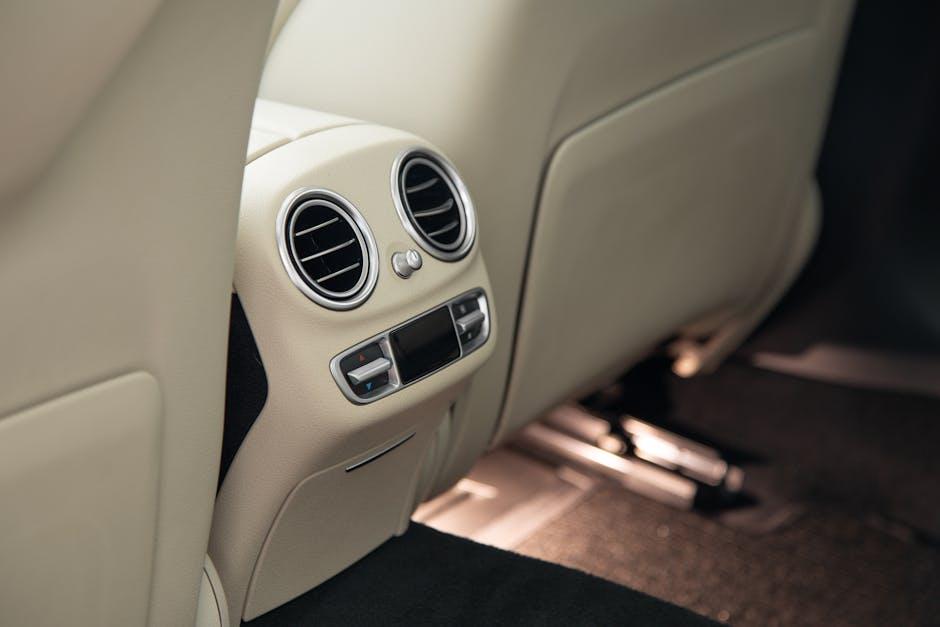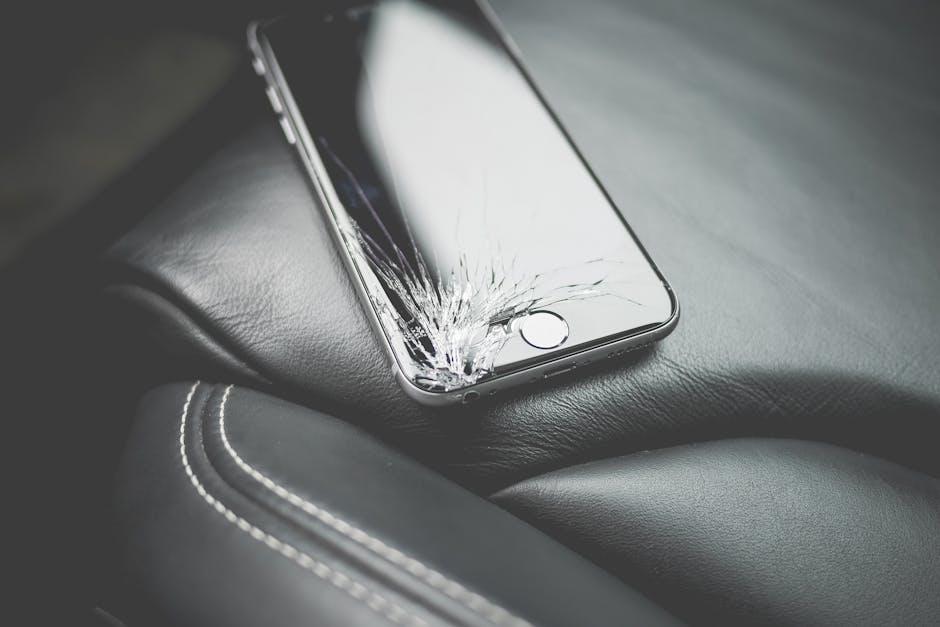Leather car seats offer a touch of luxury and timeless elegance to any vehicle, but maintaining their pristine condition requires more than just a quick wipe-down. Over time, dirt, spills, and daily wear can dull their natural beauty and even cause damage if not properly addressed. Whether you’re a seasoned car enthusiast or a casual driver, understanding the best techniques for cleaning leather seats can make all the difference. In this article, we’ll explore practical tips and expert advice to help you preserve the supple texture and rich look of your leather seats, ensuring your ride stays as stylish as the day you first drove it off the lot.
Table of Contents
- Choosing the Right Cleaning Products for Leather Car Seats
- Preparing Your Car Interior Before Cleaning Leather Seats
- Effective Techniques for Removing Dirt and Stains
- Moisturizing and Conditioning Leather for Long-Lasting Softness
- Avoiding Common Mistakes That Damage Leather Seats
- Maintaining Leather Cleanliness with Regular Care Routines
- Q&A
- To Conclude

Choosing the Right Cleaning Products for Leather Car Seats
When it comes to maintaining the luxurious feel of your leather car seats, selecting products specifically formulated for leather care is essential. Opt for gentle, pH-balanced cleaners that won’t strip away the natural oils responsible for keeping the leather soft and supple. Avoid harsh detergents, bleach, or ammonia-based cleaners, as they can cause discoloration and drying over time. Instead, look for products with hydrating ingredients like lanolin or aloe vera, which nourish the leather while effectively lifting dirt and grime.
To help you navigate the wide range of options, here’s a quick comparison of popular leather care products that are safe and effective:
| Product Type | Best For | Key Ingredients | Notes |
|---|---|---|---|
| Leather Cleaner | Removing surface dirt | Mild surfactants, pH-balanced | Use before conditioning |
| Leather Conditioner | Moisturizing and protecting | Lanolin, beeswax, natural oils | Apply after cleaning |
| Leather Protectant | UV and stain resistance | Silicone-based, UV blockers | For long-lasting protection |
Remember, always test any product on a small, inconspicuous area of your seat to ensure compatibility before proceeding with full application. This simple step can save you from potential damage and keep your leather looking flawless for years to come.

Preparing Your Car Interior Before Cleaning Leather Seats
Before diving into the cleaning process, it’s essential to create the perfect environment to protect your leather seats and ensure a thorough clean. Start by removing all loose items such as floor mats, trash, and personal belongings that can obstruct your access or cause accidental stains. Next, vacuum the seats gently using a soft brush attachment to lift away dust and debris embedded in the leather’s texture, avoiding any harsh scrubbing that might damage the surface.
Equally important is preparing your cleaning tools and solutions. Gather soft microfiber cloths, a leather cleaner designed specifically for automotive use, and a small bucket of warm water. Avoid household cleaning agents known to strip oils or cause discoloration. If you want, create a quick reference for what to avoid:
| Household Cleaners | Why to Avoid |
|---|---|
| Bleach | Harsh chemical, fades leather color |
| Ammonia-based cleaners | Dries out leather, causes cracking |
| Vinegar | Too acidic, removes protective oils |

Effective Techniques for Removing Dirt and Stains
To tackle dirt and stains on leather car seats effectively, start by gently vacuuming the surface to remove loose particles without scratching the leather. For tougher spots, mix a solution of mild soap and distilled water; dampen a microfiber cloth with this mixture and lightly dab the stained area—avoid scrubbing as it can damage the leather’s finish. Always perform a patch test on an inconspicuous area before applying any cleaner. For greasy stains, sprinkle a small amount of baking soda, let it sit for a few hours, and then wipe off with a dry cloth to absorb oils naturally.
It’s important to treat stains immediately for best results. Use these trusted techniques to maintain the leather’s suppleness and appearance:
- Spot clean with leather cleaner: Choose products designed specifically for automotive leather.
- Use distilled water: Prevent mineral buildup that tap water might cause.
- Apply conditioner after cleaning: Restore moisture to prevent cracking.
| Type of Stain | Recommended Cleaning Method | Drying Time |
|---|---|---|
| Food Spills | Damp cloth with mild soap | 15-20 minutes |
| Ink Marks | Leather-safe rubbing alcohol | 10 minutes |
| Oil and Grease | Baking soda absorption then wipe | 1-2 hours |

Moisturizing and Conditioning Leather for Long-Lasting Softness
Leather is a natural material that requires special attention to stay soft and supple over time. To maintain its luxurious feel, regular moisturizing is essential. Use a high-quality leather conditioner designed specifically for automotive use, applying it sparingly with a soft microfiber cloth. This helps replenish the leather’s natural oils, preventing cracks and dryness caused by exposure to sunlight and temperature changes. Remember, less is more—over-conditioning can make the surface greasy and attract dirt, so aim for a light, even application.
Incorporate these simple steps into your routine for optimal results:
- Test the conditioner on an inconspicuous spot first to check for colorfastness.
- Apply in small sections, allowing the leather to absorb the product completely before moving on.
- Avoid harsh chemicals or household oils, which can damage the finish.
- Buff gently with a dry cloth to restore a subtle sheen and soft texture.
| Conditioning Schedule | Frequency |
|---|---|
| Normal Use | Every 3-4 months |
| Heavy Sun Exposure | Every 1-2 months |
| Rarely Used Vehicles | Every 6 months |

Avoiding Common Mistakes That Damage Leather Seats
One of the biggest pitfalls when caring for leather seats is using harsh, non-leather-friendly cleaners that can strip natural oils and cause cracking. Always avoid abrasive brushes and household detergents, as these can dull the leather’s finish and accelerate wear. Instead, opt for specialized leather cleaning products or a mild soap diluted in water, ensuring the leather remains supple. Another common oversight is neglecting to test any cleaner on a small, hidden area first, which can prevent irreversible discoloration or damage.
Equally important is resisting the temptation to overwet the leather during cleaning. Excess moisture seeps into seams and stitching, potentially leading to mildew or weakening the interior structure. Additionally, skipping regular conditioning treatments leaves the leather vulnerable to drying out and fading under sun exposure. Below is a quick guide highlighting actions to avoid and best practices to protect your investment:
| Avoid | Recommended |
|---|---|
| Harsh chemical cleaners | pH-balanced leather cleaner |
| Excessive water use | Lightly damp microfiber cloth |
| Metal or stiff brushes | Soft-bristled brush or cloth |
| Skipping conditioning | Regular leather conditioner |
| Ignoring spot tests | Test cleaner on hidden area |

Maintaining Leather Cleanliness with Regular Care Routines
Keeping your leather car seats in pristine condition goes beyond occasional deep cleaning. A consistent routine of gentle maintenance preserves their natural luster and prevents the buildup of dirt and oils that can cause deterioration. Start by dusting off crumbs and particles with a soft, dry microfiber cloth. Follow this with a quick wipe-down using a damp cloth, ensuring not to soak the leather. The key here is to avoid harsh chemicals—opt for specialized leather cleaners that nourish the material while lifting grime.
Integrating these simple habits into your weekly or bi-weekly cleaning sessions can dramatically extend the life of your car’s leather interior. Consider the following checklist for effortless upkeep:
- Dust regularly: Use a microfiber cloth to trap dust without scratching.
- Wipe gently: Employ a slightly damp cloth and avoid excess moisture.
- Condition monthly: Apply a leather conditioner to retain softness.
- Avoid direct sunlight: Whenever possible, park in shaded areas to prevent fading.
| Routine | Frequency | Benefit |
|---|---|---|
| Dusting | Weekly | Prevents dirt accumulation |
| Light Wipe | Bi-weekly | Maintains freshness |
| Conditioning | Monthly | Restores moisture and elasticity |
Q&A
Q&A: Tips for Cleaning Leather Car Seats
Q1: Why is it important to clean leather car seats regularly?
A1: Regular cleaning preserves the leather’s natural oils, prevents cracking, and maintains its luxurious appearance. Dirt and grime can degrade leather over time, so consistent care extends the life of your seats.
Q2: What basic materials do I need to clean leather car seats?
A2: You’ll need a soft microfiber cloth, a gentle leather cleaner or a mild soap solution, a soft-bristled brush for tough spots, and a leather conditioner to nourish the seats afterward.
Q3: Can I use household cleaners on leather seats?
A3: It’s best to avoid harsh household cleaners, bleach, or ammonia-based products as they can damage the leather’s finish or cause discoloration. Stick to products specifically formulated for leather.
Q4: How do I start cleaning without damaging the leather?
A4: Begin by vacuuming the seats to remove loose dirt and debris. Then, test your cleaner on a small, inconspicuous area to ensure it won’t cause any damage or fading before applying it to the entire seat.
Q5: What’s the proper technique for cleaning the seats?
A5: Dampen your microfiber cloth with the cleaner or soap solution, gently wiping the leather in circular motions. For crevices or textured areas, use a soft brush to lift dirt without scratching.
Q6: How often should I condition my leather seats?
A6: Conditioning every 3 to 6 months is generally sufficient. This restores supple moisture to the leather and protects it against cracking and sun damage.
Q7: Are there any quick fixes for spills or stains?
A7: Attend to spills immediately by blotting with a clean cloth—avoid rubbing, which can spread the stain. For stubborn stains, use a leather-specific stain remover or consult a professional.
Q8: Can cleaning improve the smell of my car’s interior?
A8: Absolutely! Dirt and oils trapped in leather can absorb odors. Cleaning and conditioning refresh the material and help maintain a pleasant cabin aroma.
Q9: What common mistakes should be avoided while cleaning leather seats?
A9: Avoid soaking leather with excessive water, using abrasive tools, or skipping the conditioning step. Also, don’t clean in direct sunlight, as this can cause the leather to dry and fade prematurely.
Q10: Is professional leather cleaning necessary?
A10: For routine upkeep, DIY methods suffice. However, for extensive damage or stubborn stains, professional cleaning ensures expert care without risking further harm.
This Q&A offers practical insights to keep your leather car seats looking and feeling pristine, combining gentle care with effective techniques.
To Conclude
Caring for leather car seats takes a blend of patience, the right products, and a touch of know-how. By following these tips, you’ll not only keep your seats looking fresh and supple but also extend their lifespan, preserving the luxury and comfort that drew you to them in the first place. Remember, a little regular maintenance goes a long way—so treat your leather with the attention it deserves, and every drive will feel like a first-class experience.

